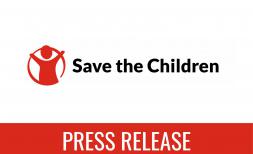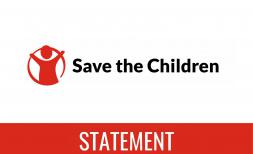More than 1 in 3 children under five at risk of starvation in Central Sahel

More than one-third of children under five in Africa’s Central Sahel – or about four million - are at risk of starvation in coming weeks as the region faces one of the world’s fastest-growing hunger crises, Save the Children said today.
In Mali, Niger and Burkina Faso, a difficult period between harvesting and planting is expected until September due to climate change, conflict and a rise in poverty following the pandemic, putting critical food supplies in jeopardy and forcing vulnerable families to further cut down on meals.
West Africa is facing its worst food crisis in a decade, with 27 million people not knowing where their next meal will come from. That’s up from seven million in 2015, a nearly 285% increase. By June 2022, an additional 11 million people could be pushed into hunger, leaving 38 million people in need of emergency food assistance this year.
Economic shocks from the COVID-19 pandemic and raging conflicts in the Central Sahel region have severely worsened the food crisis. Drought and cropland abandonment due to conflict-related displacement is also exacerbating the problem.
Many families in Mali, Niger and Burkina Faso are now finding themselves in a situation where they are unable to provide enough nutritious food for their children. Over the last year alone, the number of children under five facing acute malnutrition has increased by nearly a third.
The war in Ukraine threatens to fuel the food crisis in Central Sahel even more, with global food prices predicted to increase by up to 20%.
The consequences of this food crisis could jeopardise the future of an entire region. West and Central Africa, including Burkina Faso, Mali and Niger, account for 20% of the world's stunting cases, with significant and lasting consequences for children.
Philippe Adapoe, Regional Director of Save the Children West and Central Africa Regional Office, said
"This difficult upcoming season between planting and harvesting is an added pressure for the 38 million in the region who will be affected by food insecurity as early as June.
“With more than one in three children at risk of starvation, the situation has never been more critical. Some of these children may not survive, and a large proportion of them may grow up with irreversible consequences including stunted growth, reduced learning capacity, or poor health throughout their lives.
"We need to ensure that every child, wherever they are, has enough quality food to eat all year round. The time to act is now or we will all have failed, and this crisis will threaten to set these countries back by decades in efforts to reduce child mortality."
With the world’s attention on Ukraine, there are concerns that international aid for other crises will be redirected to the crisis in Europe, with many donors already indicating that they may make cuts in their funding to Africa. On 25 April, the UN renewed its appeal for Ukraine, calling for US$2.25 billion in humanitarian assistance, with at least 47% funded so far. In comparison, humanitarian response plans for Burkina Faso, Mali and Niger this year show a combined target of US$1.82 billion, with less than 10% funded.
Save the Children is calling on international donors to urgently provide food assistance to children and families in the Central Sahel, strengthen health and nutrition interventions to prevent and treat malnutrition, and create sustainable livelihood activities so communities can become more resilient.
In 2021, Save the Children in West and Central Africa directly assisted nearly 13 million people, including 8.5 million children, through health, nutrition, food security and livelihoods, education, and water and sanitation.
Notes to the editor:
- According to UN data, there were 11.5 million children under the age of five in Burkina Faso, Mali and Niger in 2019. More than 4 million children under five could be pushed to malnutrition and starvation in the coming weeks, 35% of the total under-5 population: https://reliefweb.int/report/burkina-faso/wca-regional-nutrition-working-group-joint-note-nutrition-situation-west-and P.2
- Humanitarians seek $2.25 billion for Ukraine response | | UN News
- Home | Financial Tracking Service (unocha.org)
- U.N. agency warns Ukraine war could trigger 20% food price rise
- On March 24, Denmark announced that DKK 2 billion has been reallocated from development aid to the reception of refugees in Denmark, including cuts of DKK 290 million in programs in the Sahel.
For further enquiries please contact:
- Samantha Halyk Samantha.halyk@savethechildren.org / +44(0)7235 19077
- We have spokespeople available.
- Our media out of hours (BST) contact is media@savethechildren.org.uk / +44(0)7831 650409
- Please also check our Twitter account @Save_GlobalNews for news alerts, quotes, statements and location Vlogs.




